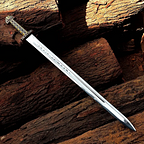What is Sparta called today?
Unveiling the Modern Identity of an Ancient City
Introduction
The name “Sparta” conjures images of ancient Greece, where a fiercely disciplined society of warriors once thrived. But what is Sparta called today? This article delves into the modern identity of this historic city, exploring its rich history, geographical context, cultural significance, and enduring legacy.
Related Topic:
Exploring the Rich History of Sparta
The Evolution of Sparta’s Name Over Time
Throughout history, the city of Sparta has been referred to by various names. In ancient times, it was known as Sparta (Σπάρτη in Greek), while in the medieval period, it became known as Lacedaemon. Today, it is commonly referred to as Sparti (Σπάρτη) in modern Greek.
Ancient Sparta: A Glimpse into History
The Rise and Fall of Spartan Civilization
Founded in the 10th century BCE, Sparta rose to prominence as a military powerhouse in ancient Greece. Renowned for its military prowess and rigid social structure, Sparta played a significant role in Greek history, particularly during the Persian Wars and Peloponnesian War.
Spartan Society and Culture
Spartan society was characterized by its emphasis on military training, austerity, and egalitarianism among its citizens (Spartiates). Women in Sparta enjoyed more rights and freedoms compared to their counterparts in other Greek city-states, although their primary role was to bear children who would become future warriors.
Military Prowess and Warrior Ethos
The Spartan military was legendary for its discipline and skill in combat. The city-state’s army, known as the Spartiate hoplites, formed the backbone of its military might and was feared throughout ancient Greece.
Modern-Day Location of Sparta
Geographical Context and Location
Modern Sparta is situated in the region of Laconia in the southeastern part of the Peloponnese peninsula in Greece. The city lies near the Eurotas River and is surrounded by the Taygetus mountain range, providing it with natural defenses and fertile plains.
Historical Significance and Archaeological Finds
Archaeological excavations in and around modern Sparti have unearthed remnants of ancient Spartan civilization, including the ruins of temples, public buildings, and tombs. These discoveries offer valuable insights into the daily life and culture of the Spartans.
Tourist Attractions and Cultural Heritage
Today, Sparta attracts visitors interested in exploring its rich history and archaeological sites. Tourists can visit the ruins of the ancient Acropolis of Sparta, the Sanctuary of Artemis Orthia, and the Museum of the Olive and Greek Olive Oil, which showcases the importance of olive oil production in ancient Spartan society.
What is Sparta Known for Today?
Modern Economy and Infrastructure
Modern Sparta is a regional center for agriculture, commerce, and industry in Laconia. It is known for its olive oil production, with numerous olive groves dotting the surrounding landscape. The city also has a diverse economy that includes manufacturing and services.
Cultural Influence and Legacy
The legacy of ancient Sparta continues to influence Greek culture and identity. The Spartan ethos of discipline, courage, and self-sacrifice resonates in modern Greece, symbolizing the ideals of strength and resilience.
Impact on Greek Identity and National Pride
Sparta holds a special place in Greek history and national consciousness. It represents a time of heroic defiance against tyranny and a commitment to freedom and independence, ideals that are cherished in contemporary Greek society.
Representation in Modern Media and Popular Culture
The iconic image of the Spartan warrior has been immortalized in literature, art, and popular culture. Films like “300” have brought the story of the Battle of Thermopylae and the Spartans’ stand against the Persians to a global audience, further cementing Sparta’s place in modern imagination.
Conclusion
Reflecting on Sparta’s Enduring Legacy
From its ancient origins to its modern-day incarnation, Sparta continues to captivate the imagination with its tales of valor, discipline, and resilience. As a symbol of Greek identity and cultural heritage, Sparta remains a testament to the enduring spirit of its people.
FAQs About Sparta’s Modern Identity
What is the current population of Sparta? Modern Sparti has a population of approximately 35,000 people.
Are there any descendants of ancient Spartans living today? While direct descendants of ancient Spartans are not identified, many inhabitants of modern Sparta trace their lineage to the broader region of Laconia.
Is Sparta a tourist destination? Yes, Sparta attracts tourists interested in its ancient history, archaeological sites, and cultural heritage.
How has modern Greece preserved Spartan heritage? Greece has preserved Spartan heritage through archaeological conservation efforts, museums, and cultural events that celebrate its history.
What are some famous landmarks in modern Sparta? Key landmarks include the Acropolis of Sparta, the Sanctuary of Artemis Orthia, and the Museum of the Olive and Greek Olive Oil.
In conclusion, Sparta’s journey from ancient city-state to modern regional center is a testament to its enduring legacy and historical significance. Through its rich history, cultural heritage, and archaeological treasures, Sparta continues to inspire and intrigue people around the world.
